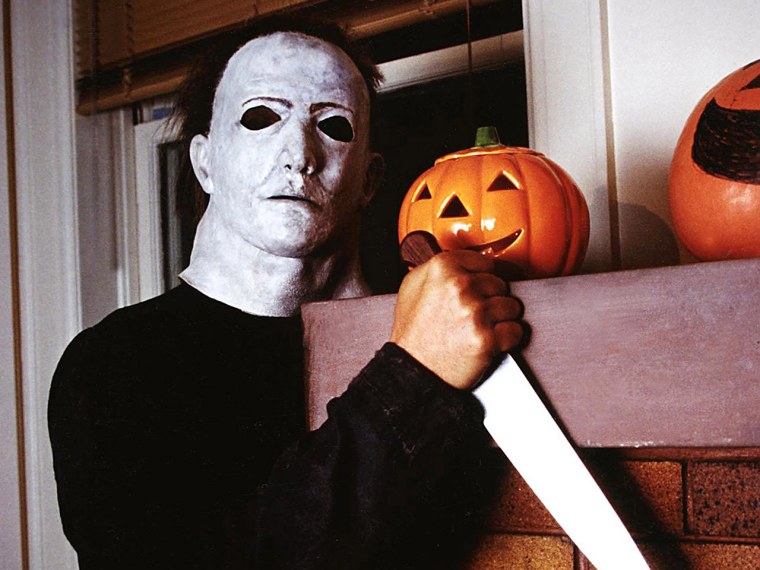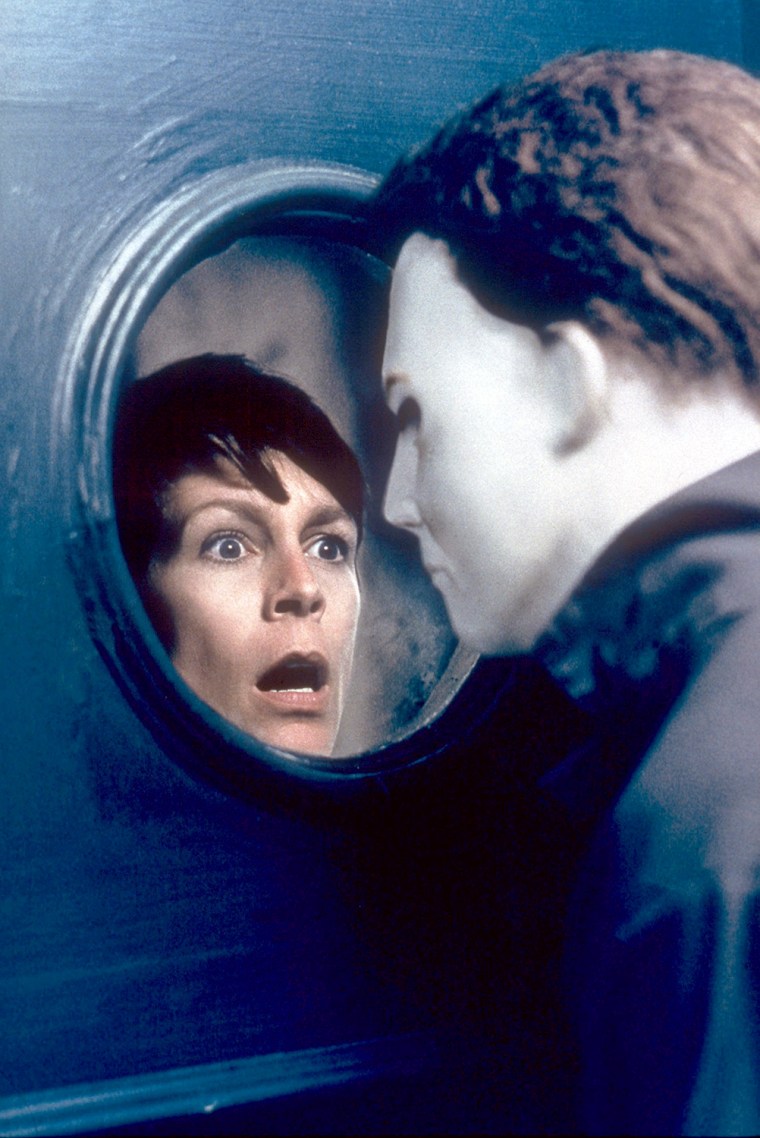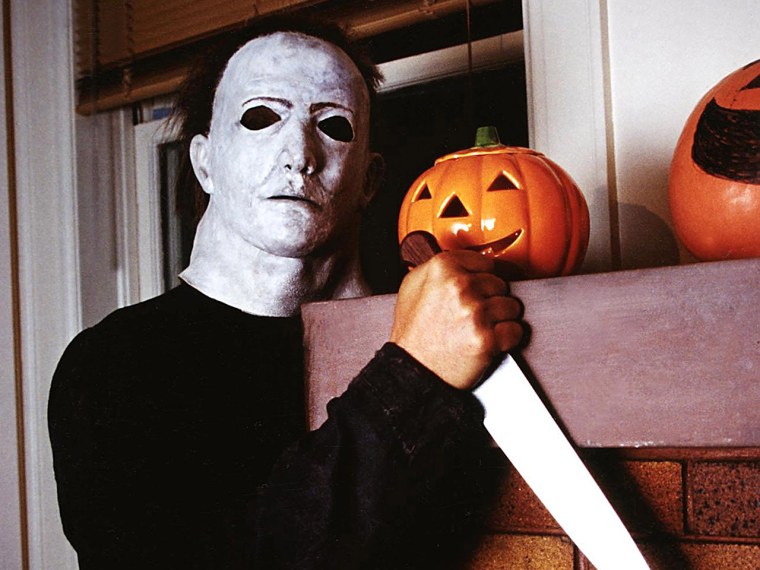He came home 35 years ago Friday. "Halloween," the iconic horror film featuring William Shatner mask-wearing killer Michael Myers, opened on Oct. 25, 1978. Made for $320,000, it grossed $70 million worldwide, and turned horror filmmaking upside-down.

John Carpenter, the late Debra Hill, and crew took a quiet midwestern setting and a spooky holiday and slathered them with terror. And when "Halloween" succeeded, "Friday the 13th," "April Fool's Day," "Silent Night, Deadly Night," and a raft of other horror films came rushing in.
"Halloween" strode in the giant footsteps of director Alfred Hitchcock, but so many films since have borrowed from "Halloween" itself. You'll surely recognize a few of these terror trademarks.
The faceless killer
One of the greatest facts about "Halloween" is the well-known detail that Michael Myers is wearing a William Shatner mask, with the eyes cut larger and painted white. Jason Voorhees and his hockey mask came later, but "Halloween" pioneered the idea that evil hides its face.
The chilling music
John Carpenter didn't just direct and co-write the film, he composed the infamous tinkly piano music that helps the suspense build and build and build. Carpenter said in AMC's "Backstory: Halloween," a documentary about the making of the film, that when he first showed it to a 20th Century Fox executive without the music, she didn't find it scary at all. With the music added, magic was made.
The innocent victims
"Halloween" helped popularize the idea that beautiful girls who dare to have sex, or smoke pot, or drink, are thereby punished by being murdered. Carpenter fought that description of the film, pointing out that his teens were doing normal teenage things, and they were murdered not for having sex, but because they weren't paying attention. ("Cabin in the Woods," a delightful 2012 horror film, turns this tradition on its ear, setting up characters who are killed in a specific order due to their horror-movie stereotype -- the virgin being saved for last.)

The blissful setting
Haddonfield, Ill., the movie's setting, is fictional, but named for co-writer and producer Debra Hill's hometown of Haddonfield, N.J. The film was shot in Pasadena, Calif. (a palm tree is visible in one scene), but the crew brought in bags of autumn leaves and used a fan to blow them around to get that midwestern fall flavor. Every town, Carpenter thought, had its own haunted house, its own legends, and he threw that up on the big screen and made Haddonfield become the stand-in for each viewer's hometown. "Death has come to your little town, sheriff," Donald Pleasance says in one scene. "You can either ignore it, or you can help me to stop it."
What the killer sees
The movie opens with a long, continuous shot as we're taken into Michael Myers' house. Carpenter utilized the recently invented Steadicam to smoothly put viewers inside the 6-year-old killer's point of view. We even see through the holes cut in his Halloween clown mask as he takes a butcher knife from the kitchen drawer and glides upstairs, to his unsuspecting sister's room. There are reportedly three cuts in this smoothly flowing shot, but heck if we can spot them. And other horror movies have used the Steadicam a thousand times since, but few use it so well.
The killer who won't die
The idea that evil will never die, that the boogeyman, the monster, the devil in whatever form, is always out there, is a classic concept that goes beyond movies -- it's biblical. Today's savvy moviegoers may scoff at the cliche of the victim who drops the knife right next to the killer she thinks she's killed off, then turns her back to him. But in "Halloween," it was fresh. Jamie Lee Curtis as Laurie Strode leans against a doorframe sobbing, thinking she's survived, and suddenly, in the background, Michael Myers sits up. It's not over; it'll never be over. Happy Halloween.
